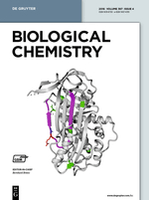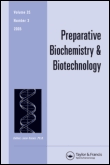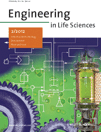
Biochemical Engineering Journal
Scope & Guideline
Driving Innovation in Biochemical Engineering for a Sustainable Future
Introduction
Aims and Scopes
- Microbial Biotechnology:
Research focusing on the application of microorganisms for the production of biofuels, biochemicals, and bioplastics, emphasizing metabolic engineering and biotransformation. - Bioprocess Optimization:
Studies aimed at enhancing the efficiency and productivity of biochemical processes, including fermentation, enzymatic reactions, and downstream processing. - Environmental Biotechnology:
Innovations in bioremediation and waste treatment using biological systems, including microbial fuel cells and anaerobic digestion, to address environmental challenges. - Biocatalysis and Enzyme Engineering:
Development and optimization of enzyme-catalyzed processes for various applications, including pharmaceuticals, food production, and waste treatment. - Sustainable Bioprocessing:
Research promoting the use of renewable resources and sustainable practices in biochemical production, including valorization of agricultural and industrial waste. - Process Design and Modeling:
Application of mathematical and computational modeling to design and optimize bioprocesses, including reactor design and scale-up studies.
Trending and Emerging
- Synthetic Biology and Genetic Engineering:
A surge in research applying synthetic biology approaches, including CRISPR and metabolic pathway engineering, to enhance the production of valuable compounds from microorganisms. - Microbial Fuel Cells and Bioelectrochemical Systems:
An increasing focus on the development of microbial fuel cells and bioelectrochemical systems for energy recovery and wastewater treatment, showcasing their potential in sustainable practices. - Circular Economy Practices:
Growing interest in the valorization of waste materials through bioprocessing, emphasizing the importance of sustainability and resource recovery in biochemical engineering. - AI and Machine Learning in Bioprocessing:
The incorporation of artificial intelligence and machine learning techniques for optimizing bioprocesses and predicting outcomes, reflecting the industry's shift towards data-driven approaches. - Advanced Bioreactor Designs:
Emerging research on novel bioreactor designs, including microfluidic systems and hybrid reactors, to enhance the efficiency and scalability of bioprocesses. - Integrated Bioprocessing Systems:
A trend towards developing integrated systems that combine various bioprocessing steps, such as fermentation and downstream processing, to streamline production and reduce costs.
Declining or Waning
- Traditional Fermentation Techniques:
Research on conventional fermentation processes, particularly those not incorporating modern biotechnological advancements, has seen a decrease as researchers explore more innovative and efficient methods. - Basic Biochemical Pathway Studies:
Studies focused solely on the characterization of biochemical pathways, without application to bioprocessing or biotechnology, have become less prevalent as the field shifts towards applied research. - Single-Organism Studies:
Research that examines the metabolic processes of single microbial species without considering community interactions or co-culturing approaches is less common, reflecting a shift towards understanding complex microbial ecosystems. - Static Bioreactor Systems:
There is a noticeable decline in studies focusing on traditional static bioreactor systems, as dynamic and more sophisticated systems gain prominence in research.
Similar Journals

BIOLOGICAL CHEMISTRY
Pioneering Research in Clinical and Molecular BiochemistryBIOLOGICAL CHEMISTRY, published by WALTER DE GRUYTER GMBH, is a premier journal based in Germany focusing on the ever-evolving fields of Biochemistry, Clinical Biochemistry, and Molecular Biology. With a robust reputation reflected in its top quartile rankings (Q1) within both Biochemistry and Clinical Biochemistry categories, and a commendable Q2 ranking in Molecular Biology for 2023, this journal stands as a vital resource for researchers, professionals, and students alike. The journal spans a rich history dating back to 1881 and embraces contemporary scientific discourse, ensuring accessibility to critical findings and advances that shape the biological sciences. Although it is not an open-access journal, its impactful contributions and relevant insights continue to serve the academic community. With its ISSN 1431-6730 and E-ISSN 1437-4315, BIOLOGICAL CHEMISTRY remains committed to fostering a deeper understanding of chemical processes in biological systems, driving innovation and research excellence into the future.

PREPARATIVE BIOCHEMISTRY & BIOTECHNOLOGY
Advancing biochemistry and biotechnology for a healthier tomorrow.PREPARATIVE BIOCHEMISTRY & BIOTECHNOLOGY, published by Taylor & Francis Inc, serves as a vital platform for advancing research in the fields of biochemistry, biotechnology, and related areas of medicine. With an ISSN of 1082-6068 and an E-ISSN of 1532-2297, this journal has established itself with a notable Q3 ranking in the 2023 categories of Biochemistry, Biotechnology, and Miscellaneous Medicine, reflecting its relevance and contribution to these disciplines. The journal encompasses a wide range of topics, providing crucial insights into preparative methods, innovative biotechnological applications, and their implications for various medical advancements. Although not open access, the journal's rich content is crucial for researchers and professionals aiming to stay abreast of the latest developments and methodologies in biochemistry and biotechnology. With an enduring commitment to excellence since its inception in 1996, the journal remains an essential resource for academics and practitioners dedicated to advancing scientific knowledge and practical applications.

BIOSYSTEMS ENGINEERING
Pioneering advancements for a sustainable tomorrow.BIOSYSTEMS ENGINEERING, published by Academic Press Inc. Elsevier Science, is a leading journal that has established itself as a key contributor in the fields of agronomy, crop science, animal science, food science, soil science, and control systems engineering. With an impressive position in the 2023 Category Quartiles, featuring Q1 rankings in Agronomy and Crop Science, Animal Science and Zoology, Food Science, and Soil Science, alongside a Q2 ranking in Control and Systems Engineering, this journal stands at the forefront of innovative research. Currently indexed in Scopus, it boasts a commendable track record, with its Agricultural and Biological Sciences rankings placing it in the 95th percentile for Agronomy and Crop Science and the 90th percentile for Soil Science, among others. With a commitment to disseminating critical advancements and fostering scientific dialogue, BIOSYSTEMS ENGINEERING offers an invaluable platform for researchers, professionals, and students alike, seeking to advance their understanding and application of engineering principles in biological systems. As a hybrid journal that provides both subscription and open access options, it ensures broad accessibility to high-quality research that shapes the future of sustainable agriculture and biological systems.

BIOTECHNOLOGY AND BIOPROCESS ENGINEERING
Exploring the Intersection of Microbiology and EngineeringBIOTECHNOLOGY AND BIOPROCESS ENGINEERING, published by the Korean Society for Biotechnology and Bioengineering, is a prominent journal in the fields of applied microbiology, biotechnology, bioengineering, and biomedical engineering. Since its inception in 1996, this journal has served as a vital platform for researchers and professionals, facilitating the dissemination of cutting-edge research and innovative applications related to bioprocesses and biotechnology systems. With an ISSN of 1226-8372, this journal is ranked within the Q3 quartile across several categories, demonstrating its relevance and impact in the academic community. Although it operates under traditional access modalities, the journal strives to provide quality and timely insights into the advancements in bioprocess technology and microbial applications, fostering a collaborative environment for knowledge exchange. Notably, it is indexed with a respectable presence on Scopus, making it a valuable resource for students and professionals seeking the latest developments in biotechnology. For more details, kindly refer to the Korean Science Technology Center, #704 Yeoksam-Dong, Gangnam-Ku, Seoul 135-703, South Korea.

ENGINEERING IN LIFE SCIENCES
Pioneering Research for a Sustainable Future in BioengineeringENGINEERING IN LIFE SCIENCES, published by Wiley, is a pivotal journal for professionals, researchers, and students dedicated to advancing the interdisciplinary fields of bioengineering, biotechnology, and environmental engineering. With an ISSN of 1618-0240 and an E-ISSN of 1618-2863, this journal has established itself as a reputable platform for disseminating innovative research findings and breakthroughs in engineering applications within the life sciences. Currently holding a prestigious Q2 ranking in multiple categories, including bioengineering and environmental engineering, it reflects a strong commitment to high-quality, impactful research (Scopus ranks: Environmental Science - Rank #61/197, Biochemistry, Genetics and Molecular Biology - Rank #112/311). The journal spans contributions from 2004 to 2024, ensuring a comprehensive archiving of evolving scientific discourse. Although it does not currently offer open access, its curated articles are accessible through institutional and single-article purchases, providing valuable insights and updates for the academic community. Join us in shaping the future of engineering within life sciences and stay informed on critical advancements that are driving innovation across multiple disciplines.

Synthetic and Systems Biotechnology
Pioneering Research for a Sustainable FutureSynthetic and Systems Biotechnology, published by KEAI PUBLISHING LTD, is a pioneering open-access journal that has made significant contributions to the fields of applied microbiology, biotechnology, biomedical engineering, genetics, and structural biology since its inception in 2016. With an ISSN of 2405-805X, this journal is committed to fostering innovative research and interdisciplinary collaboration, providing a platform for the dissemination of high-quality studies that push the boundaries of scientific knowledge. Recognized for its excellence, it holds prestigious Q1 rankings in both Applied Microbiology and Biotechnology as well as Biomedical Engineering in 2023, alongside notable Q2 rankings in Genetics and Structural Biology. Researchers, professionals, and students alike can access cutting-edge research that explores the dynamic interplay between synthetic biology and systems biology, driving advancements that could reshape health, industry, and environmental sustainability. By operating under an open-access model, Synthetic and Systems Biotechnology ensures that new findings are accessible to a global audience, thereby maximizing the impact and reach of the published work and paving the way for future discoveries.

Biotechnology for Biofuels and Bioproducts
Transforming Energy Landscapes with Cutting-Edge Biotechnological InsightsBiotechnology for Biofuels and Bioproducts is a premier international journal published by BMC, situated in the United Kingdom, focusing on the critical intersection of biotechnology and sustainable energy solutions. Established as an Open Access platform in 2022, this journal aims to disseminate high-quality research that advances our understanding of biofuels, bioproducts, and their applications within environmental sustainability. With its commendable Q2 ranking in multiple relevant categories including Applied Microbiology and Biotechnology and Renewable Energy, this journal serves as a vital resource for researchers, industry professionals, and students seeking to explore innovative biotechnological approaches to address global energy challenges. The journal emphasizes interdisciplinary research, fostering collaboration among scientists in biotechnology, environmental science, and policy-making. As it continues to publish impactful findings until 2024, Biotechnology for Biofuels and Bioproducts remains essential for those dedicated to advancing sustainable methodologies in energy and resource management.

BIOTECHNOLOGY AND APPLIED BIOCHEMISTRY
Advancing Innovations in Biochemistry and Biotechnology.BIOTECHNOLOGY AND APPLIED BIOCHEMISTRY, published by Wiley, is a renowned journal that bridges the gap between fundamental research and practical applications in the fields of biochemistry and biotechnology. With an ISSN of 0885-4513 and an E-ISSN of 1470-8744, this journal has been instrumental since its inception in 1986, focusing on diverse topics including applied microbiology, drug discovery, and process chemistry. The journal is currently recognized in various categories with impressive quartile rankings, showcasing its influence with placements in Q2 for applied microbiology, biotechnology, and biomedical engineering, among others. Researchers and professionals benefit from its comprehensive scope and critical insights into the latest advancements in these domains. Although not an open-access journal, it provides invaluable access options for academic institutions and professionals seeking to stay at the forefront of biotechnology innovations. Its commitment to presenting quality research facilitates the growth of knowledge and fosters collaborations across disciplines, making it an essential resource for anyone invested in the rapidly evolving landscape of biosciences.

BIOPROCESS AND BIOSYSTEMS ENGINEERING
Innovating Solutions for a Sustainable FutureBIOPROCESS AND BIOSYSTEMS ENGINEERING is a prestigious journal published by Springer, dedicated to advancing the field of bioengineering and biotechnology. Established in 1996, this influential journal provides a platform for disseminating high-quality research that covers a wide spectrum of topics related to bioprocessing, biosystems, and their applications in medicine and environmental engineering. With an impressive impact factor and ranking in the top quartile (Q2) across bioengineering, biotechnology, and miscellaneous medical fields, BIOPROCESS AND BIOSYSTEMS ENGINEERING stands out as a critical resource for researchers, professionals, and students. The journal is indexed in Scopus, reflecting its significant contribution to the scientific community, particularly with its robust percentile rankings (77th in Biotechnology and 70th in Bioengineering). Available in both print and electronic formats, this journal ensures accessible research for those pushing the boundaries of knowledge in bioprocessing and biosystems. As it continues to evolve, BIOPROCESS AND BIOSYSTEMS ENGINEERING encourages submissions that contribute to innovative research practices and applications, thereby fostering academic collaboration and advancement in this dynamic field.

PERIODICA POLYTECHNICA-CHEMICAL ENGINEERING
Empowering Research Through Open Access ExcellencePERIODICA POLYTECHNICA-CHEMICAL ENGINEERING is a distinguished journal published by the Budapest University of Technology and Economics, focusing on the diverse field of chemical engineering. Established in 1968 and transitioning to Open Access since 1999, this journal provides a vital platform for sharing cutting-edge research and innovations in chemical engineering and related disciplines. With an HIndex that reflects its growing influence and categorized in the Q3 Quartile for Chemical Engineering (miscellaneous) in 2023, PERIODICA POLYTECHNICA aims to facilitate the dissemination of knowledge among researchers, professionals, and students alike. The journal's Scopus rankings in Environmental Science, General Chemistry, Materials Science, and Biochemistry showcase its multidisciplinary approach, making it an essential resource for anyone engaged in advancing their expertise in chemical engineering and the broader scientific community. Located in Hungary, PERIODICA POLYTECHNICA continues to contribute to the academic dialogue and inspire innovative solutions to contemporary challenges.